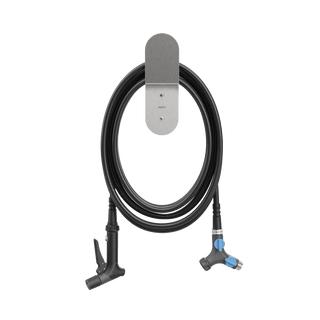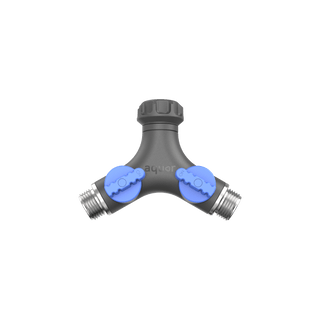10 Easy-to-Grow Outdoor Plants for Gardening Beginners

Spring has finally sprung! Now is the time to embrace your inner green-thumbed gardener and get planting.
Are you a novice when it comes to nurturing living things of the leafy, flowering variety? Not to worry. These ten outdoor plants are simple to grow and easy to take care of. All you need is a little sun, water, and love.
Sunflowers

An annual plant, cheery sunflowers are sturdy, tall fellows who enjoy six to eight hours of direct, daily sun and flourish as long as their soil is not waterlogged. Sunflowers thrive when planted in loose, nutrient-rich soil and don’t require much fertilization. They should reach maturity 70 to 100 days after planting. Once the plants are established, a generous weekly watering in the summer will be sufficient.
Black-eyed Susans
 Members of the sunflower family, black-eyed Susans should be planted in warm spring soil and will bloom in the summer to early fall. The perennial wildflower prefers full sun, although they’ll do just fine with partial exposure. Water regularly to prevent the plants from drying out; black-eyed Susans love moist, well-drained soil. They should reach maturity 60 after planting. Removing faded flowers will extend the blooming period.
Members of the sunflower family, black-eyed Susans should be planted in warm spring soil and will bloom in the summer to early fall. The perennial wildflower prefers full sun, although they’ll do just fine with partial exposure. Water regularly to prevent the plants from drying out; black-eyed Susans love moist, well-drained soil. They should reach maturity 60 after planting. Removing faded flowers will extend the blooming period.
Coneflowers

A perennial in the daisy family, coneflowers are fast growers that bloom from mid-summer all the way through fall frost. The drought-resistant plants love the sun and enjoy rich, well-drained soil, although they are tolerant of poor soil conditions. Plant coneflowers in late spring to early summer, and water only if the coneflowers are new or conditions are very dry. They will bloom within 60 to 90 days. No need to trim dying flowers—allow the seed heads to self-sow.
Marigolds

This golden annual blooms all summer long and desires abundant sunshine. Plant marigolds in warm spring soil, then water well and allow the soil to partially dry between subsequent waterings. Marigolds sprout within a week in warm weather, and plants typically produce blooms in eight weeks. Pinching the tops off of established plants encourages blooming and fullness.
Daylilies

The perennial daylily is a true survivor. Daylilies are able to persist through drought, poor soil conditions, and shade. They emerge from fleshy roots, and the flowers form on leafless scapes which grow above the foliage. Plant daylilies in spring, and they will bloom during the summer months. In cooler climates they may require three years or more before they produce flowers. Although they are tough in nature, daylilies prefer full sun and moist, yet well-drained, fertile soil.
Nasturtiums

Annual nasturtiums have edible leaves and flowers, which make for tasty additions to green salads and beautiful garnishes. Although nasturtiums can grow in partial shade, they will produce more blooms with full sun exposure. Plant the seeds in moist, well-drained soil in early spring; they prosper in poorer soils and do not require fertilizers. Nasturtiums bloom between 35 to 52 days after germination, under the right conditions. Remove dead flowers to encourage further blooming, and collect fallen seeds to replant in spring. Simply brush off excess soil, dry the seeds, then store in a paper envelope in a cool, dark place.
Lavender

Plant fragrant lavender in the spring as the soil warms up—lavender takes to poor or moderately fertile soil. Before the plants are established, water once or twice a week. Lavender may bloom its first year, but it takes three years for plants to mature. Mature lavender requires less frequent watering up until the purple buds form. The bushy perennial’s gray-green foliage stays evergreen throughout the year in most regions, and the plant is a natural deer deterrent. No snacking here!
Snapdragons
 Snapdragons are tall perennials with colorful flowers. Even though snapdragons can overwinter, they are often grown as annuals. Plant early spring in partial shade, and keep the soil moist for the first few weeks of growth, then lightly water weekly in the absence of rainfall. Snapdragons enjoy cooler temperatures and will often bloom in both the spring and fall. It takes around eight weeks for the bloom to open after planting. Since snapdragons stop blooming in warmer weather, most gardeners opt to plant transplants. Regular deadheading maximizes blooming.
Snapdragons are tall perennials with colorful flowers. Even though snapdragons can overwinter, they are often grown as annuals. Plant early spring in partial shade, and keep the soil moist for the first few weeks of growth, then lightly water weekly in the absence of rainfall. Snapdragons enjoy cooler temperatures and will often bloom in both the spring and fall. It takes around eight weeks for the bloom to open after planting. Since snapdragons stop blooming in warmer weather, most gardeners opt to plant transplants. Regular deadheading maximizes blooming.
Hostas

Hostas are hardy, shade-loving perennials that happily prosper in cooler climates. The beautiful green foliage adds color and visually appealing texture to gardens all season long. Plant hostas in early spring, and keep the soil moist but not too wet. Smaller and more vigorous hostas can reach mature sizes in three to five years, while giant and slower growing hostas can take five to seven years to reach their potential. To encourage more blooms, remove old flower stalks, and trim away brown leaves to help control potential slugs or disease.
Daffodils

A fall-planted bulb of the perennial variety, bright yellow daffodils show their much-welcomed faces in the spring. Daffodils prefer a sunny spot in the garden, although partial sun will do. Water late-blooming daffodils in dry spring weather, and allow the plants to fully die off before snipping spent remains from the base.
 Keep your flower garden happily hydrated.
Keep your flower garden happily hydrated.
In need of a new Ultralight Garden Hose or perhaps a sleek hose bib? Aquor’s got you covered.
Gardening Vocabulary
Annual: a plant that completes its life cycle within one growing season (lifespan: 1 year)
Perennial: a plant that grows in the spring and summer, dies back every autumn and winter, then returns in the spring (lifespan: 3+ years)
Deadhead: to remove dead flowers from a plant, encouraging further blooming
Self-sow: when a plant drops seed before dying and germinates on its own the following year
Germinate: to grow and put out shoots after a period of dormancy
Overwinter: to live through the winter






















